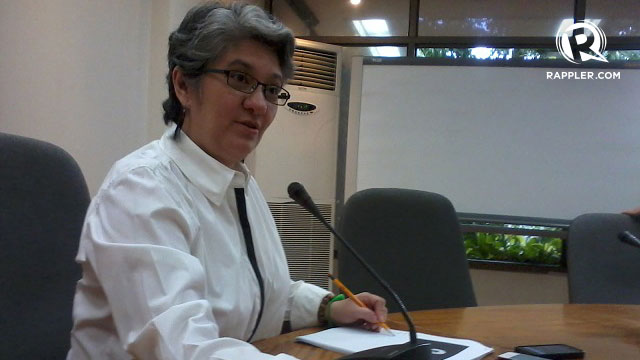SUMMARY
This is AI generated summarization, which may have errors. For context, always refer to the full article.

MANILA, Philippines – For students who can’t decide on a specialization, the Department of Education (DepEd) has proposed a 4th strand under the academic track of K to 12’s senior high school curriculum.
In a press briefing Wednesday, December 18, DepEd Undersecretary for Programs and Projects Dina Ocampo unveiled the proposed General Academic Strand which takes into consideration a student “who does not know what he wants to be when he grows up.”
“Now there are many people like that who, until 17 [years old], they really don’t know. So what we’ve done is we’ve created a strand that collected from all the other strands – like general education [or] liberal arts,” she said in a mix of English and Filipino.
The proposed strand includes 9 specialized subjects:
- Humanities 1
- Humanities 2
- Social Science
- Applied Economics
- Organization and Management
- Disaster Readiness and Risk Reduction
- Elective 1 from any track/strand
- Elective 2 from any track/strand
- Work immersion
“We still have a buffer that…there is a place for children who are still exploring and finding out their strengths, their interests,” Ocampo added.
The K to 12 program originally included only 3 strands under the academic track: Business, Accountancy, Management (BAM), Humanities, Education, Social Sciences (HESS), and Science, Technology, Engineering, Mathematics (STEM). (READ: INFOGRAPHIC: 10 things about K to 12)
Education Secretary Br Armin Luistro earlier said that adding the 4th strand was an executive decision after reviewing the department’s absorpitve capacity.
“[It is] important for DepEd to provide for programs we can monitor. More focus on consistency, [while] private schools can do the niche-ing. In fact by opening the liberal arts strand, DepEd should be concentrating on the liberal arts strand, and a few of the other strands,” he said in a Philippine Business for Education (PBEd) forum last October.
The K to 12 program, formally known as the Enhanced Basic Education Act of 2013, was enacted last May 15, with the full nationwide implementation set for 2016. Earlier reports quoted Luistro as saying some public schools will begin rolling out their senior high school curriculum as early as 2015.
Learner-centric curriculum
As different stakeholders – professionals, government employees and people from the academe – continue to brainstorm on the tracks, the curriculum is evolving into “a product of how people are responding to events in society.”
Take for example the 9 specialized tracks of BAM:
- Applied Economics
- Business Ethics and Social Responsibility
- Fundamentals of Accountancy, Business and Management 1
- Fundamentals of Accountancy, Business and Management 2
- Business Math
- Business Finance
- Organization and Management
- Principles of Marketing
- Work immersion
Ocampo said the subject “Business Ethics and Social Responsibility” was not included 3 months ago.
“3 months ago, there was no such thing as Business Ethics and Social Responsibility in this curriculum, but in the age of Napoles, there is now that course. Education is actually a social science. It is a response to society, it is a way…to create the society it envisions,” she said. (READ: ‘Madame Jenny’ Napoles, woman in the eye of a storm)
“Yung curriculum ay buhay (The curriculum is alive).”
She reiterated that the curriculum – “a product of several brains and several disciplines interacting” – is still primarily learner-centric more than anything else.
It must also contribute to the preferred exit of the student after basic education: higher education, employment, entrepreneurship, or middle level skills development.
Aside from the specialized subjects, a senior high school student will also take 15 core subjects with content and competencies common in any track, and 7 other contextualized track subjects with competencies common in any track – a total of 31 subjects or 2,480 hours.
The contextualized subjects are important so students who may change their mind can shift from one track or strand to another without being “guilty about it.”
Ocampo said they hope to complete the senior high school curriculum by February 2014. – Rappler.com
Add a comment
How does this make you feel?
There are no comments yet. Add your comment to start the conversation.